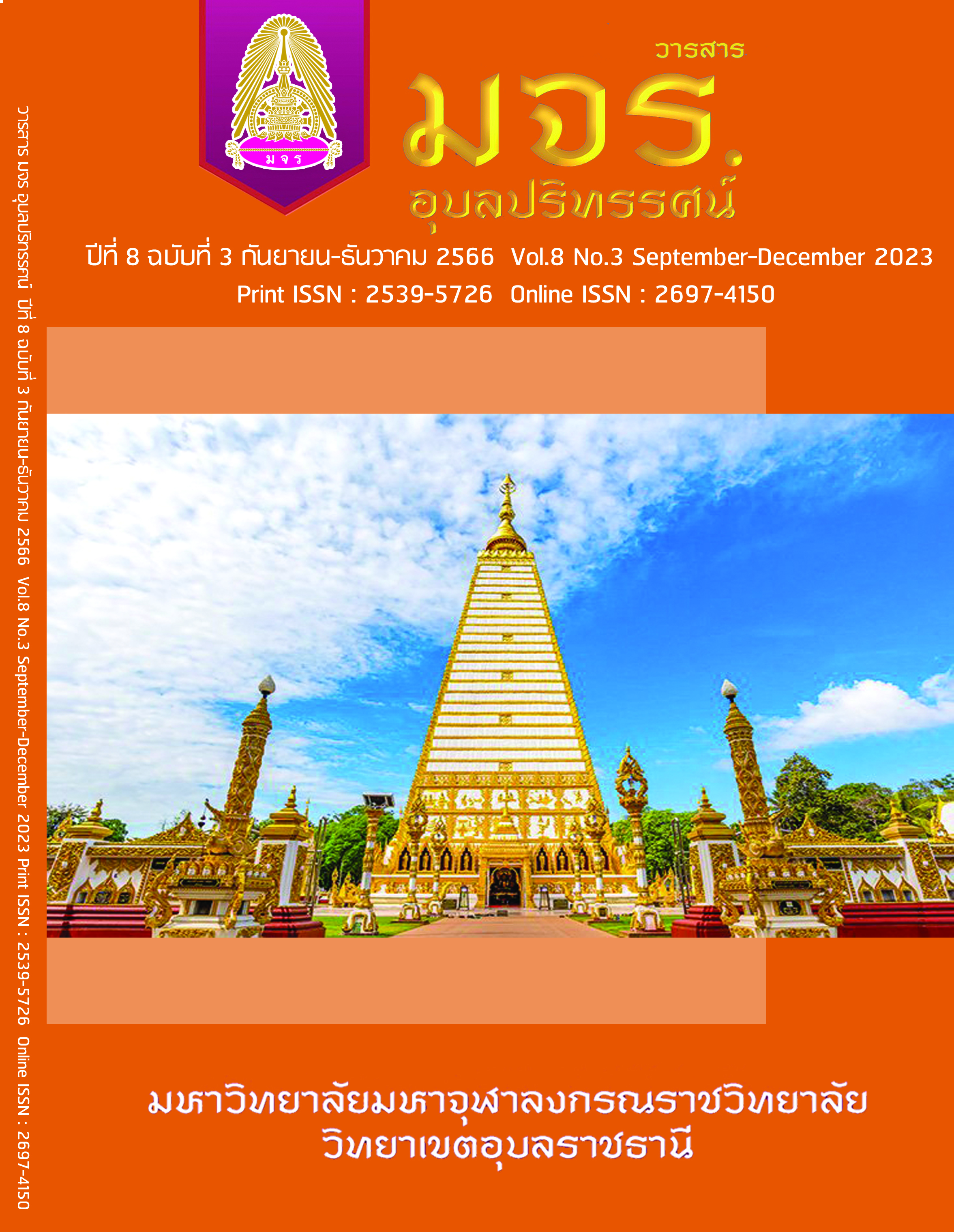FACTORS AFFECTING SHARING EXCEED FOOD TO REDUCE FOOD WASTE CASE STUDY: MUSLIM HOUSEHOLD AT SUANLUANG 1 COMMUNITY
Main Article Content
Abstract
The Objectives of this research article were to study factors affecting sharing exceed food to reduce food waste case study: Muslim household at Suanluang 1, consists of the factors of knowledge, attitude, practices, religion beliefs and guidelines. The collected data is analyzed through research tools in the quantitative method by using closed-ended questionnaires from 92 Muslim households in the Suanluang 1 community, calculated using the G*Power program. Statistical analysis involves two parts (1) Descriptive Statistics for the frequency, percentage, mean average and standard deviation to examine general information and demographic characteristics of the sample and (2) Inferential Statistics by using Stepwise Simple Linear Regression Analysis to analyze factors affecting sharing exceed food to reduce food waste in Muslim household at Suanluang 1
The result of the factors influencing the sharing of excess food in Muslim households found that the factor of knowledge about the causes and solutions to food excess and waste is well understood, with over 70 percent accuracy. However, the understanding of the meaning of excess food and the environmental impact of food waste is below 50 percent. Overall, attitudes and practices factors are at a high level. Religious beliefs and guidelines to sharing excess food factors are at the highest level. The analysis of factors influencing the sharing of excess food identifies two factors with the most significant influence (1) enhancing guidelines to sharing excess food by providing knowledge about excess food and waste and (2) reducing attitude factors, such as the belief that separating food waste before disposal does not help solve the problem. The regression coefficient (β) is 2.125 at a statistically significant level of .01, predicting excess food sharing in Muslim households at 33 percent (R2 = .332).
Article Details
References
กรมควบคุมมลพิษ. คู่มือการดำเนินงานลดคัดแยกขยะมูลฝอยภายในอาคารสำนักงาน. พิมพ์ครั้งที่ 5. กรุงเทพฯ : กรมควบคุมมลพิษ กระทรวงทรัพยากรธรรมชาติและสิ่งแวดล้อม, 2560.
ภัทรานิษฐ์ ศรีจันทราพันธุ์. แนวทางการจัดการขยะอาหารในครัวเรือน. พิมพ์ครั้งที่ 2. กรุงเทพฯ : บริษัทอมรินทร์พริ้นติ้งแอนด์พับลิชชิ่ง จำกัด (มหาชน), 2563.
ภัทรานิษฐ์ ศรีจัรทราพันธุ์. การลดขยะอาหารในครัวเรือนแบบครบวงจร. วารสารมหาวิทยาลัยศิลปากร. 36, 3: 19-36, 2559.
ระพีพรรณ มูหะหมัด. อิสลามกับการพัฒนาอย่างยั่งยืน: กรณีศึกษาชุมชนมัสยิดกมาลุลอิสลาม คลองแสนแสบ กรุงเทพมหานคร, 2556.
วัฒนณรงค์ มากพันธ์ และคณะ ความรู้ ความเข้าใจ และพฤติกรรมการจัดการขยะของประชาชน ในเขตเทศบาลนครตรัง จังหวัดตรัง. วารสารมหาวิทยาลัยทักษิณ ปีที่ 21, ฉบับที่ 1 มกราคม - มิถุนายน 2561.
สถาบันวิจัยเพื่อการพัฒนาประเทศไทย. รายงานฉบับสมบูรณ์ (Final report) การศึกษาแนวทางการบริการจัดการอาหารส่วนเกินเพื่อลดปัญหาขยะอาหารที่เหมาะสมกับประเทศไทย. กรุงเทพฯ : สำนักงานกองทุนสนับสนุนการสร้างเสริมสุขภาพ (สสส.), 2562.
UNFAO. “Food Wastage Footprint: Impacts on Natural Resources.” [online]. Available:https://www.researchgate.net/publication/262611961_Food_Wastage_Footprint_Impacts_on_Natural_Resources_Summary_Report Retrieved November 9, 2022.


